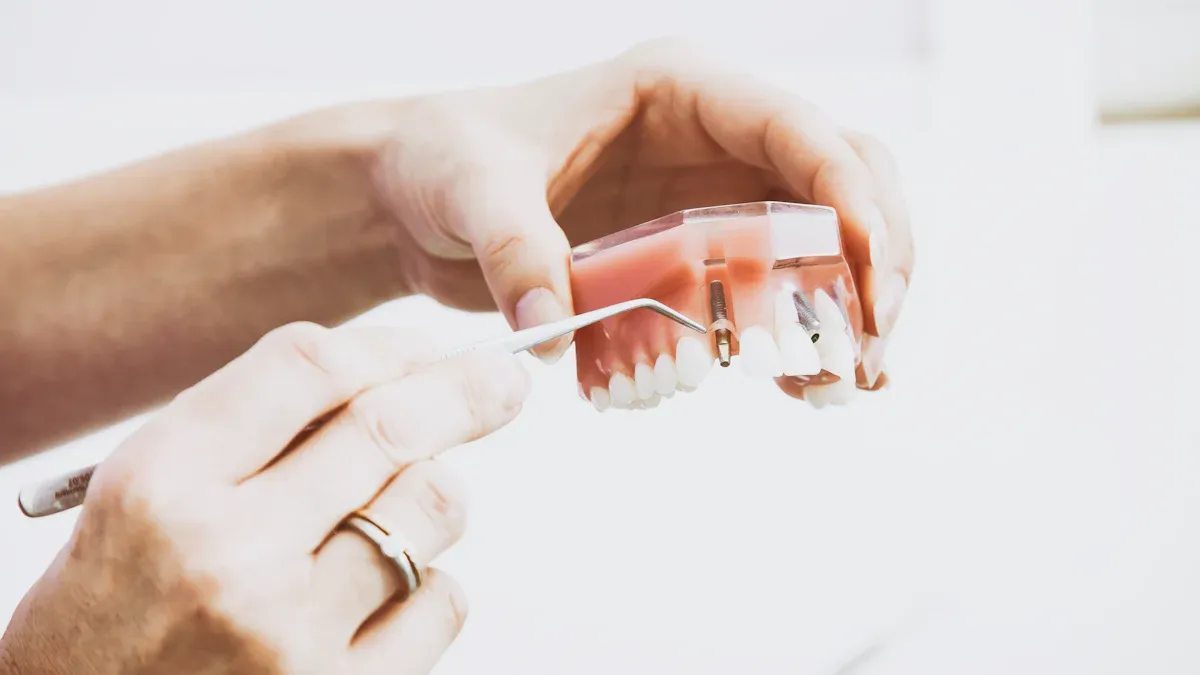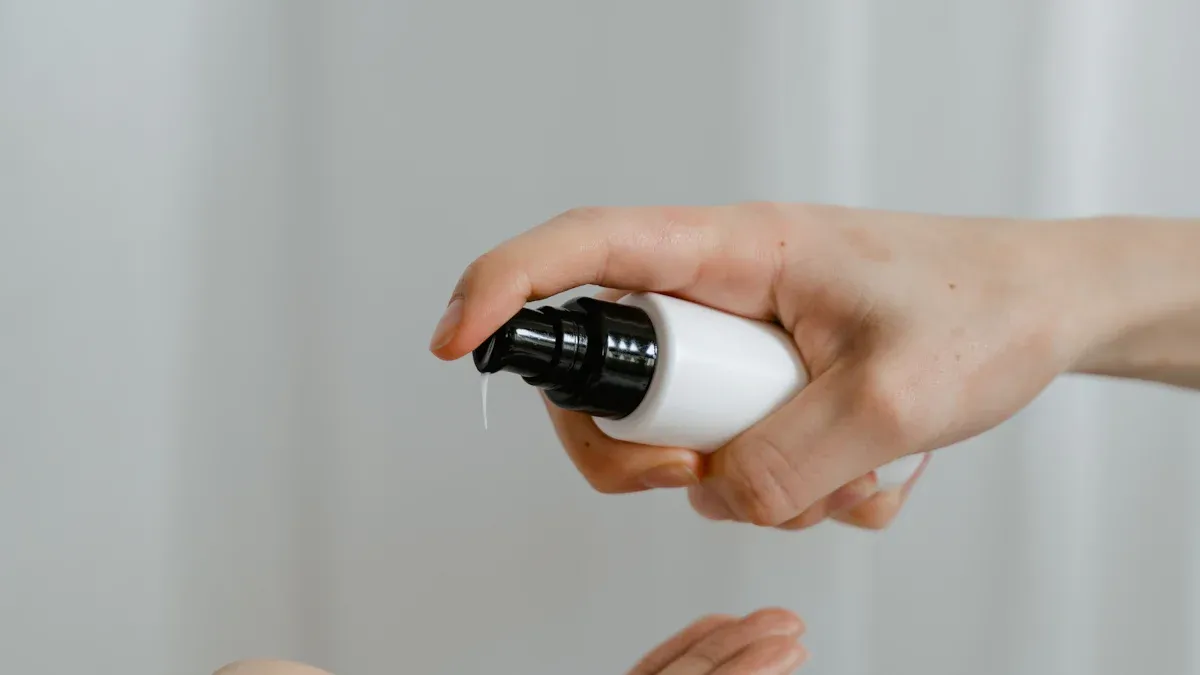How to Clean and Maintain the O-Rings in Your Waterproof Flashlight

O-rings play a crucial role in keeping your flashlight waterproof. Neglecting their care can lead to water damage and reduced performance. Regular maintenance prevents these issues and extends the life of your helius flashlight. Cleaning and inspecting the O-rings ensures they remain effective, protecting your device from moisture and wear.
Key Takeaways
Clean your flashlight's O-rings every three months or after heavy use. This stops dirt from building up and keeps it waterproof.
Check O-rings for damage once a month. Look for cracks or thinning to see if they need replacing.
Apply silicone grease to keep O-rings soft and flexible. Don’t use too much grease, as it can attract dirt and weaken the seal.
Cleaning the O-Rings in Your Flashlight

Tools and Materials for Cleaning
To clean your flashlight's O-rings effectively, you need the right tools and materials. Start by gathering the following items:
A dry toothbrush or Q-tip for removing dirt and debris.
Paper towels or tissues for wiping down surfaces.
Rubbing alcohol or Windex to cut through grease and grime.
Silicone grease, such as those from dive shops or plumber's silicone grease, for lubrication after cleaning.
These tools ensure thorough cleaning without damaging the O-rings or other flashlight components. Always remove the O-rings before cleaning to prevent accidental tearing or stretching.
Step-by-Step Cleaning Instructions
Follow these steps to clean your flashlight's O-rings and maintain their waterproofing capabilities:
Disassemble the Flashlight: Carefully unscrew the flashlight to access the O-rings. Remove them gently to avoid damage.
Clean the Threads: Use a toothbrush or Q-tip to remove dirt from the threads. Wipe the area with a paper towel or tissue to ensure it's dry.
Clean the O-Rings: Dip a Q-tip in rubbing alcohol or Windex and gently clean the O-rings. This removes grease and contaminants.
Dry Completely: Allow the O-rings and flashlight parts to air dry. Moisture can compromise the waterproof seal.
Reapply Lubrication: Once dry, apply a light coat of silicone grease to the O-rings. This keeps them flexible and enhances their sealing ability.
Routine cleaning ensures your flashlight remains waterproof and performs optimally. Neglecting this step can lead to water damage and reduced functionality.
Inspecting and Maintaining O-Rings
Identifying Wear and Tear
Regular inspection of your flashlight's O-rings is crucial for maintaining their waterproofing capabilities. If you use your flashlight daily, inspect the O-rings at least once a month. For occasional use, a six-month interval is sufficient. During these checks, look for common signs of wear and tear, such as:
Visible surface wear, especially where the O-ring contacts other surfaces.
Flaking, thinning, or pitted areas on the O-ring's surface.
A rough texture or reduced diameter at contact points.
Environmental factors like UV exposure can accelerate O-ring degradation. Direct sunlight, artificial UV light, and ozone can cause cracking, hardening, and loss of flexibility. These issues compromise the seal and increase the risk of leaks. By identifying these signs early, you can prevent further damage and ensure your flashlight remains functional.
When to Replace O-Rings
Knowing when to replace the O-rings is just as important as inspecting them. Regular checks help you determine if the O-rings are still effective. Replace the O-ring if you notice any damage, such as cracks, thinning, or loss of elasticity. Even with proper maintenance, O-rings degrade over time and need replacement to maintain optimal performance.
To extend their lifespan, keep the O-rings clean and lubricated. Silicone grease prevents drying and cracking, ensuring a tight seal. However, if the O-rings no longer fit snugly or show visible damage, replacing them is the best option. This simple step protects your flashlight from water damage and ensures long-term reliability.
Lubricating O-Rings for Longevity

Choosing the Right Silicone Grease
Selecting the correct silicone grease is essential to maintain the waterproof seal of your flashlight. Not all lubricants are suitable for O-rings, as some can damage the material. Silicone grease is the preferred choice due to its compatibility with most O-ring materials and its ability to prevent drying or cracking. However, you should avoid using it on silicone O-rings, as it may cause swelling, making components difficult to unscrew.
Here are some recommended silicone greases for O-rings:
Superlube: A reliable and cost-effective option for general use.
Plumber's Silicone Grease: Ideal for sealing O-rings exposed to water under pressure.
Nyogel: A low-viscosity grease suitable for everyday applications.
Using the right grease ensures your flashlight remains waterproof and functional over time. Always check the compatibility of the grease with your O-ring material before application.
Proper Lubrication Techniques
To lubricate the O-ring effectively, follow these steps:
Remove the O-rings from the flashlight carefully to avoid stretching or tearing.
Clean the grooves and threads using a soft toothbrush to remove dirt and debris.
Roll the O-rings between your fingers with a small amount of silicone grease. Apply a thin, even coating.
Reinsert the O-rings into their grooves, ensuring they sit snugly.
Wipe the flashlight threads with a microfiber cloth and apply a light layer of grease if needed.
Avoid over-lubricating, as excess grease can attract dirt and compromise the seal. Proper lubrication keeps the O-rings flexible and ensures a tight seal, protecting your flashlight from water damage.
Tip: Think of O-ring maintenance like an oil change for your car. Regular care prevents wear and extends the life of your flashlight.
Reassembling and Testing the Flashlight
Correct Placement of O-Rings
When reassembling your flashlight, placing the O-rings correctly is critical to maintaining its waterproof seal. Improper placement can lead to issues such as cuts, nicks, or overstretching, which compromise the O-ring's ability to prevent water damage. To avoid these problems, follow these tips:
Inspect the grooves for sharp edges or burrs that could tear the O-ring.
Ensure the O-ring is free of dust or dirt before installation. Contaminants can reduce its effectiveness.
Apply a thin layer of silicone grease to the O-ring. Lubrication minimizes friction and prevents twisting or spiraling during placement.
Gently roll the O-ring into its groove without overstretching it. Avoid using sharp tools that might damage the material.
Signs of improper placement include visible cuts, deformation, or an uneven fit. If you notice these issues, remove the O-ring and reinstall it carefully. Proper placement ensures a snug fit and a reliable seal, protecting your flashlight from water ingress.
Testing for Waterproof Integrity
After reassembling your flashlight, testing its waterproof integrity is essential. A simple submersion test can help you confirm the effectiveness of the seal. Here's how to do it:
Submerge the flashlight in a shallow container of water for a few minutes.
Monitor closely for any signs of moisture inside the flashlight.
If no water enters, the seal is effective. If you notice leaks, adjust the O-rings and repeat the test.
For a more thorough test, some users submerge their flashlights in pools for extended periods, ensuring all components are tightly secured. You can also conduct spray tests to check for water penetration under pressure. These methods help you verify the flashlight's waterproof performance and prevent water damage during use.
Tip: Always double-check the tightness of the tail switch and ensure the threads are greased before testing. This extra step enhances the seal and improves water resistance.
Storage Tips to Maintain a Flashlight
Preventing O-Ring Drying or Cracking
Proper storage conditions play a vital role in preventing your flashlight's O-rings from drying or cracking. To maintain their flexibility and sealing ability, you should follow these guidelines:
Store the flashlight in a cool environment, keeping temperatures below 100°F (38°C). Avoid placing it near heat sources or in direct sunlight.
Maintain relative humidity below 75% to prevent condensation. For polyurethane O-rings, aim for 65% or lower.
Protect the flashlight from direct sunlight and intense artificial light. Use UV-resistant packaging when possible.
Keep it away from ozone-generating equipment, such as electric motors or photocopiers, as ozone can degrade O-rings.
Avoid storing the flashlight in contact with harmful metals like copper or iron, which can react with the O-rings.
By adhering to these storage practices, you can significantly extend the lifespan of the O-rings and ensure the flashlight remains waterproof.
Best Storage Practices for Flashlights
To maintain a flashlight effectively, you need to store it in a way that preserves all its components, including the O-rings. Here are some best practices:
Always store the flashlight in its original packaging or a protective case to prevent deformation of the O-rings.
Follow the FIFO (First In, First Out) principle if you own multiple flashlights. This ensures older units are used first, reducing the risk of long-term storage damage.
Regularly inspect the flashlight during storage. Check the O-rings for wear and tear, and apply silicone grease periodically to maintain their flexibility.
Keep the flashlight away from liquids or vapors unless they are part of the packaging. This prevents accidental exposure to harmful substances.
Proper storage not only preserves the O-rings but also enhances the overall longevity of the flashlight. Routine maintenance, combined with these storage tips, ensures your flashlight remains reliable and waterproof for years to come.
Maintaining the O-rings in your helius flashlight involves five essential steps:
Clean the seals and remove debris.
Inspect for wear and replace damaged O-rings.
Lubricate with silicone grease to prevent drying.
Reassemble carefully to ensure a proper seal.
Store in a cool, dry place to avoid cracking.
Regular care prevents leaks, enhances performance, and extends the life of your flashlight. Neglecting maintenance can lead to costly repairs and reduced efficiency. By incorporating these simple steps into your routine, you ensure your helius flashlight remains reliable and waterproof for years to come.
Tip: Regular maintenance saves money and improves safety by identifying issues early.
FAQ
How often should you clean your flashlight's O-rings?
You should clean the O-rings every three months or after heavy use in dirty or wet conditions. Regular cleaning ensures optimal waterproof performance and prevents damage.
Can you use any lubricant for O-rings?
No, you should only use silicone grease. Other lubricants can degrade the O-ring material, reducing its effectiveness and causing potential leaks.
What happens if you over-lubricate the O-rings?
Excess lubrication attracts dirt and debris, which can compromise the seal. Apply a thin, even layer to maintain flexibility without risking contamination.
Tip: Keep a small maintenance kit handy for quick O-ring care! 🛠️
See Also
Key Strategies for Keeping Your Flashlight in Top Shape
Comprehensive Manual for Flashlight Care and Upkeep
A Complete Guide to Flashlight Cleaning Procedures
